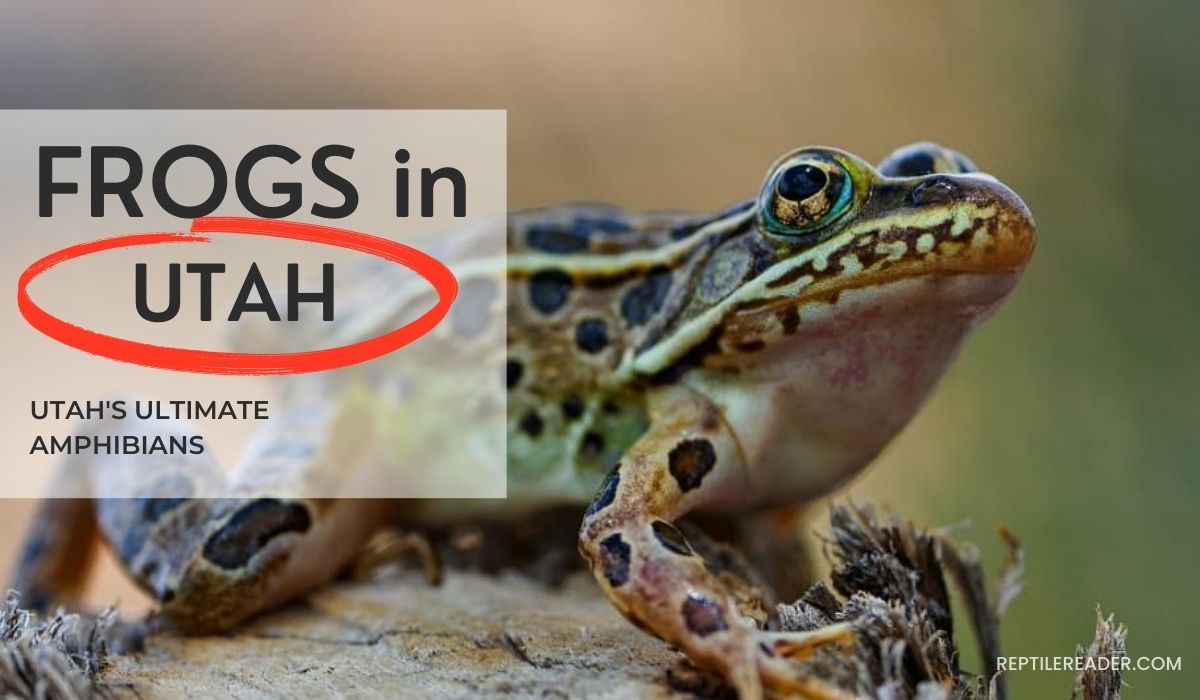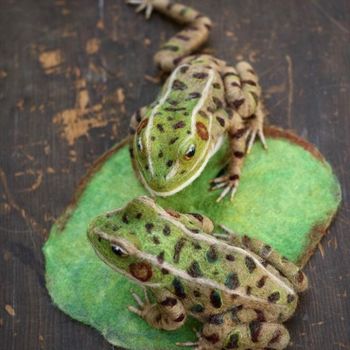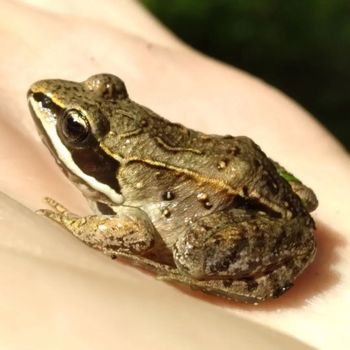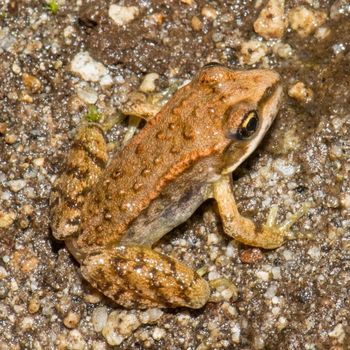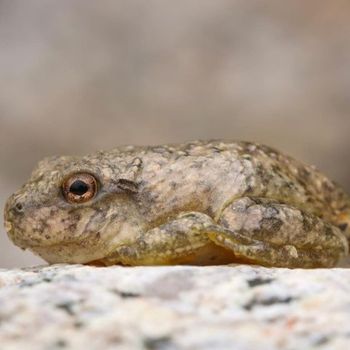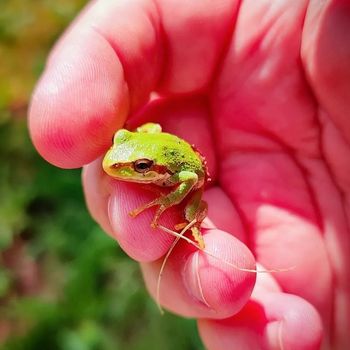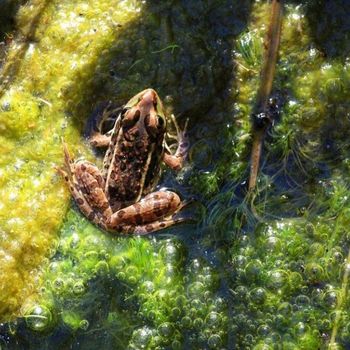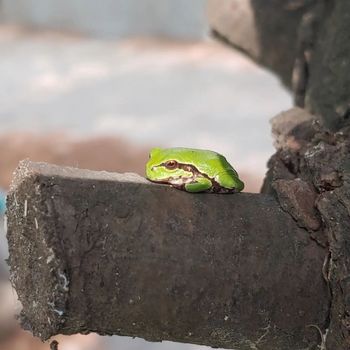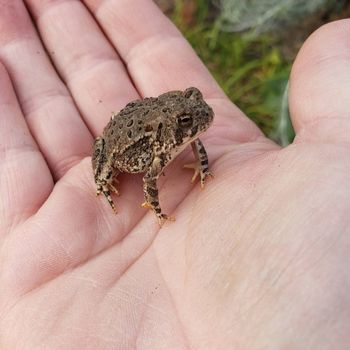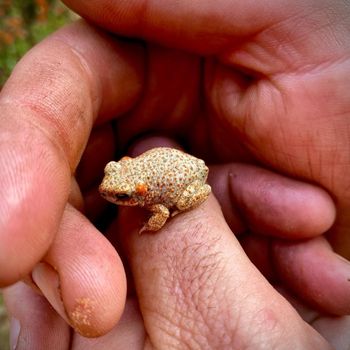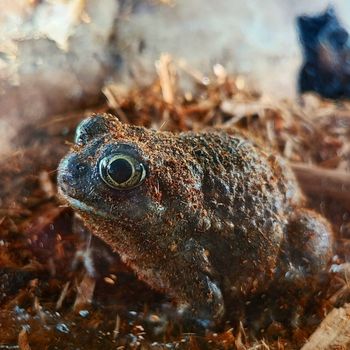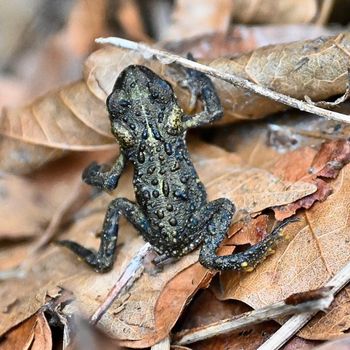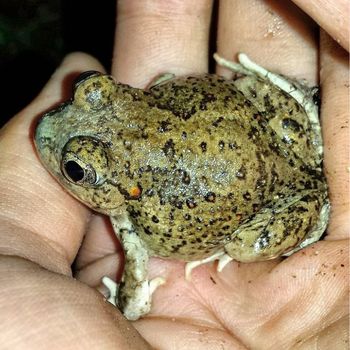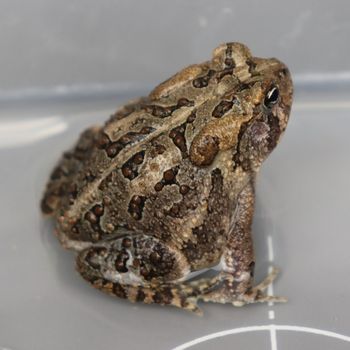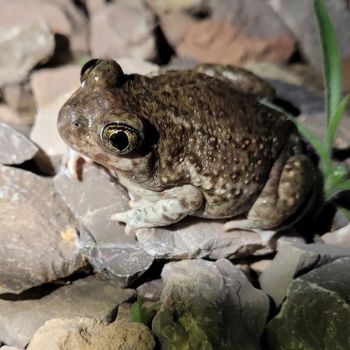Frogs in Utah: Utah’s Ultimate Amphibians
Ever wondered how many fascinating species of our amphibious friends you can spot in Utah? Well, you’re in for a treat, because there are 16 incredible species hopping around the state!
From the adorable Boreal Chorus Frog to the powerful Great Basin Spadefoot, Utah is home to some of the most diverse and interesting frogs you’ll ever encounter. We bet youíll never look at the stateís ponds and wetlands the same way again.
So grab your binoculars and a notepad, because we’re about to embark on a thrilling, ribbiting journey through the wonderful world of Utah’s frogs. Let’s leap right into it!
| # | Name | Details | Image |
| 1 | Northern Leopard Frog (Rana pipiens) |
| 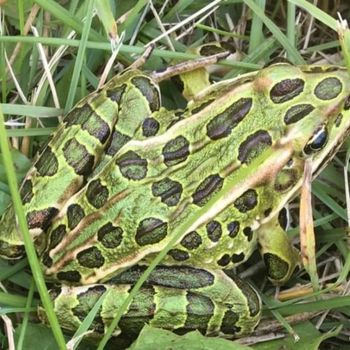 |
| 2 | American Bullfrog (Lithobates catesbeianus) |
| 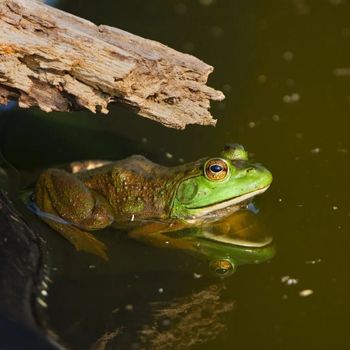 |
| 3 | Boreal Chorus Frog (Pseudacris maculata) |
| 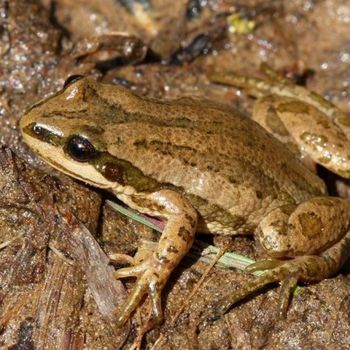 |
| 4 | Columbia Spotted Frog (Rana luteiventris) |
| 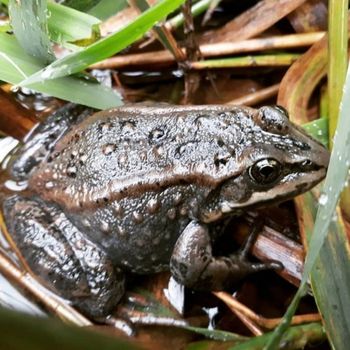 |
| 5 | Canyon Tree Frog (Hyla arenicolor) |
| 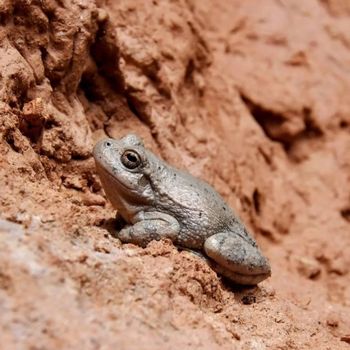 |
| 6 | Pacific Tree Frog (Pseudacris regilla) |
| 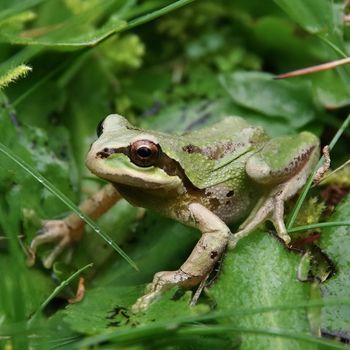 |
| 7 | Relict Leopard Frog (Lithobates onca) |
| 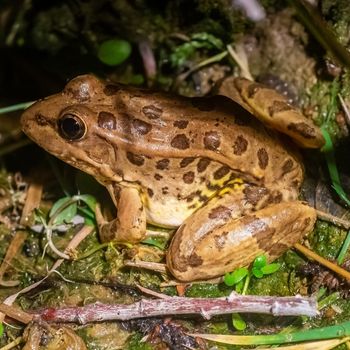 |
| 8 | Green Frog (Lithobates clamitans) |
| 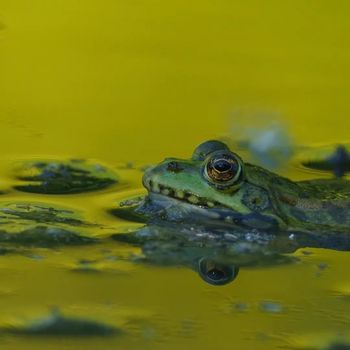 |
| 9 | Woodhouse’s Toad (Anaxyrus woodhousii) |
|  |
| 10 | Red-spotted Toad (Anaxyrus punctatus) |
| 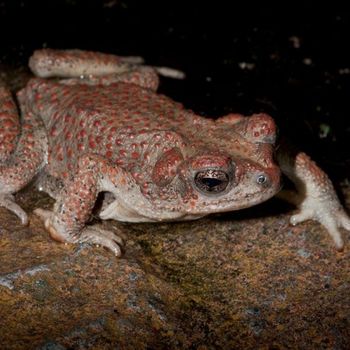 |
| 11 | Great Basin Spadefoot Toad (Spea intermontana) |
| 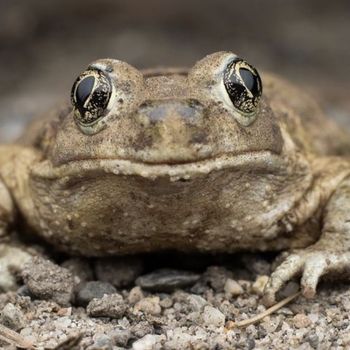 |
| 12 | Arizona Toad (Anaxyrus microscaphus ) |
| 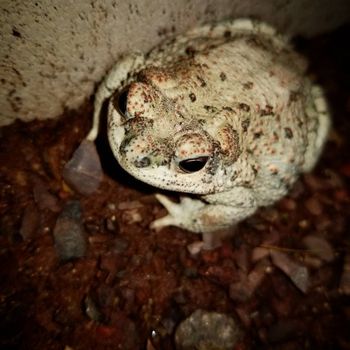 |
| 13 | Western Toad (Bufo boreas) |
|  |
| 14 | New Mexican Spadefoot Toad (Spea multiplicata) |
| 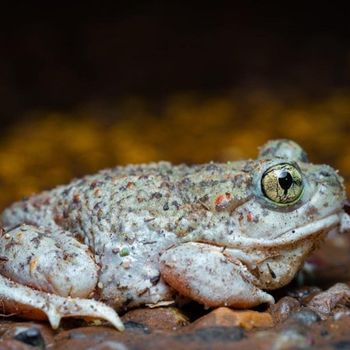 |
| 15 | Great Plains Toad (Anaxyrus cognatus) |
| 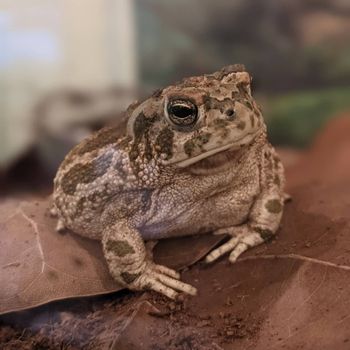 |
| 16 | Plains Spadefoot Toad (Spea bombifrons) |
| 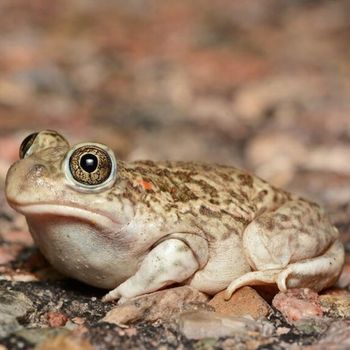 |
Are Frogs Common in Both Utah and Colorado?
Yes, frogs can be found in both Utah and Colorado, thriving in wetlands and water bodies. However, the diversity of frogs and amphibians in colorado’s natural beauty is more extensive due to varied habitats like rivers and high-altitude lakes, which offer ideal breeding and living conditions for these creatures.
16 Frog Species You Can Find in Utah
Get ready to dive deep into the lives of 16 incredible frog species that call Utah their home, showcasing their unique adaptations and remarkable behaviors.
1. Northern Leopard Frog
- Scientific Name: Rana pipiens
- Common Name: Northern leopard frog
- Size: 2.0-4.3 inches (5.1-11 cm)
- Color & Pattern: Green or brown with dark spots circled by a lighter border
- Natural Habitat: Marshes, swamps, grasslands, wetlands
- Geographic Range: Canada and the united states (alaska to new mexico)
- Diet: Insects, spiders, small crustaceans, other invertebrates
- Reproduction: Breeds in shallow, well-vegetated freshwater habitats, lay eggs in clusters attached to vegetation
- Vocalization: Snore-like call by males during breeding
- Adaptation: Long, powerful legs for jumping, partially webbed hind feet for swimming
- Conservation Status: Least concern
These captivating creatures are perfectly suited for life in marshes, swamps, grasslands, and wetlands, stretching from Alaska to New Mexico in North America. Their partially webbed hind feet allow them to swim gracefully, while their long, powerful legs support impressive jumping abilities.
With a main diet of insects, spiders, small crustaceans, and other invertebrates, these voracious eaters keep their habitats in Utah lively. During breeding season, these frogs settle in shallow, well-vegetated freshwater habitats, and females lay eggs in clusters attached to vegetation. To attract a mate, male frogs serenade their companions with a unique, snore-like vocalization.
Remarkably, the Northern Leopard Frog is capable of surviving being frozen, an unparalleled adaptation contributing to their classification as “Least Concern” in conservation statuses. However, it is worth noting that habitat loss may lead to a decline in future populations. Overall, these fascinating frogs continue to enchant us with their beauty, resilient nature, and captivating behaviors.
2. American Bullfrog
- Scientific Name: Lithobates catesbeianus
- Common Name: American bullfrog
- Size: 3.5-6 inches (9-15 cm)
- Color & Pattern: Green to brown with dark spots and patterns
- Natural Habitat: Ponds, lakes, marshes, slow-moving streams
- Geographic Range: Eastern and central united states, canada, mexico, introduced worldwide
- Diet: Fish, crustaceans, insects, small mammals, birds, other amphibians
- Reproduction: Breeds in aquatic habitats, lays eggs in flat surfaces on water
- Vocalization: Deep, low-pitched calls by males during breeding
- Adaptation: Highly adaptable, strong legs for jumping and swimming
- Conservation Status: Least concern
Immerse yourself in the world of the American Bullfrog (Lithobates catesbeianus), a striking amphibian with a size ranging from 3.5 to 6 inches (9-15 cm). Adorned in a rich palette of green to brown, they exhibit dark spots and patterns which serve as excellent camouflage within their habitat. These aquatic creatures can leap and swim with grace and strength, due to their powerful legs.
Dwelling in the eastern and central United States, Canada, Mexico, and various regions around the world, they call ponds, lakes, marshes, and slow-moving streams their home. They satiate their hunger with a diverse diet of fish, crustaceans, insects, small mammals, birds, and other amphibians. The American Bullfrog is even known to be cannibalistic, predating on native species in introduced areas.
During breeding season, male Bullfrogs exclaim deep, low-pitched calls to attract mates, resulting in them laying their eggs in flat surfaces on the water for successful reproduction. Despite being a significant predator, their conservation status remains of least concern and they continue to thrive, showcasing their impressive adaptability. Delve deeper into the world of this fascinating amphibian, and uncover more about its unique quirks and captivating existence.
3. Boreal Chorus Frog
- Scientific Name: Pseudacris maculata
- Common Name: Boreal chorus frog
- Size: 0.8-1.6 inches (2-4 cm)
- Color & Pattern: Gray, brown or green with dark stripes on the back and sides
- Natural Habitat: Marshes, grasslands, wet meadows
- Geographic Range: Northwestern united states and canada
- Diet: Small insects, spiders, and other invertebrates
- Reproduction: Breeds in shallow water, lays eggs attached to vegetation
- Vocalization: Series of ascending, short trills
- Adaptation: Able to change color for camouflage, strong climbers
- Conservation Status: Least concern
Hidden in the marshes, grasslands, and wet meadows of northwestern United States and Canada, the small creature with a big voice, the Boreal Chorus Frog, thrives. Although diminutive in size, measuring only 0.8-1.6 inches, their distinct colors and patterns of gray, brown, or green with dark stripes on the back and sides allow them to stand out in their environment. Pseudacris maculata, as they’re known in the scientific community, have an impressive ability to change their color for camouflage and are remarkable climbers.
Surviving primarily on small insects, spiders, and other invertebrates, these talented amphibians lay their eggs attached to vegetation in shallow water, filling the surrounding area with a series of ascending, short trills to establish their presence. Fascinatingly, these frogs have developed concentrated antifreeze proteins that allow them to endure freezing temperatures – a vital adaptation in their often chilly habitat.
Fortunately, the conservation status of this Utah resident is deemed the least concern due to their versatile adaptations and stable population, ensuring these interesting creatures remain an essential part of their ecosystem.
4. Columbia Spotted Frog
- Scientific Name: Rana luteiventris
- Common Name: Columbia spotted frog
- Size: 1.5-4 inches (3.8-10 cm)
- Color & Pattern: Black, brown or green with irregularly shaped spots
- Natural Habitat: Wetlands, streams, lakes, ponds
- Geographic Range: Western north america (alaska to nevada)
- Diet: Aquatic insects, spiders, small invertebrates
- Reproduction: Breeds in quiet ponds, lays eggs in clusters attached to vegetation
- Vocalization: Low-pitched, rapid chuckling or clicking call by males during breeding
- Adaptation: Explosive jump for escape, webbing on hind feet for swimming
- Conservation Status: Least concern
From Alaska to Nevada, you’ll find these small amphibians – ranging from 1.5 to 4 inches in size – leisurely residing in wetlands, streams, lakes, and ponds. Their diet primarily consists of aquatic insects, spiders, and other small invertebrates hiding in their watery abodes.
Males of this elusive species serenade their female counterparts with low-pitched, rapid chuckling or clicking calls during breeding. You’ll find their eggs in clusters attached to vegetation within the serene waters of quiet ponds. Keep an eye out for their astonishing explosive jumps for escape, and watch them gracefully swim using the webbing on their hind feet – natural adaptations serving their survival in aquatic habitats.
Did you notice a flash of red or orange on the frog’s belly? That’s a distinctive feature of the Columbia Spotted Frog. Not only visually striking, but these little frogs are also essential to our understanding of wetlands, as they serve as a habitat indicator species. Although their conservation status is currently “least concern,” let’s celebrate and protect these incredible, vibrant creatures and the vital habitats they call home.
5. Canyon Tree Frog
- Scientific Name: Hyla arenicolor
- Common Name: Canyon tree frog
- Size: 1.5-2.5 inches (3.8-6.3 cm)
- Color & Pattern: Gray, brown or green with irregular dark markings
- Natural Habitat: Canyons, streams, ponds, rocky environments
- Geographic Range: Southwestern united states, mexico
- Diet: Insects, spiders, small invertebrates
- Reproduction: Breeds in temporary or permanent water bodies, lays eggs on submerged vegetation
- Vocalization: Short, raspy calls by males during breeding
- Adaptation: Ability to change color, adhesive toe pads for climbing
- Conservation Status: Least concern
Its gray, brown, or green skin adorned with irregular dark markings allows it to seamlessly blend into the rocky landscapes, canyons, and water bodies of its southwestern United States and Mexican habitat.
These expert climbers feast upon insects, spiders, and small invertebrates during the cover of night. Canyon Tree Frogs utilize their adaptive abilities in color-changing and adhesive toe pads for exceptional navigation of their surroundings. Males attract their mates with short, raspy calls, breeding in temporary or permanent waters, and lay their eggs on submerged vegetation.
Remarkably, these high-elevation dwellers can thrive up to 8,000 feet. Currently enjoying a conservation status of “Least Concern,” the nocturnal Canyon Tree Frog remains a fascinating embodiment of adaptability and resilience.
6. Pacific Tree Frog
- Scientific Name: Pseudacris regilla
- Common Name: Pacific tree frog
- Size: 1-2 inches (2.5-5 cm)
- Color & Pattern: Green, brown, or gray with a dark eye stripe
- Natural Habitat: Woodlands, grasslands, wetlands
- Geographic Range: Western north america (alaska to california)
- Diet: Insects, spiders, small invertebrates
- Reproduction: Breeds in aquatic habitats, lays eggs in clusters attached to vegetation
- Vocalization: Distinctive “ribbit” call by males during breeding
- Adaptation: Can change color depending on environment, good climbers
- Conservation Status: Least concern
These petite amphibians measure a mere 1-2 inches long, and beautifully adorn themselves in shades of green, brown, or gray with a striking dark eye stripe. Agile and adaptable, they thrive in diverse habitats across western North America, from the lush forests of Alaska to the sunny shores of California.
The Pacific Tree Frog’s diet primarily consists of insects, spiders, and small invertebrates. They cherish their role as the “voice of the frog chorus,” and delight in serenading the environment during breeding season with their distinctive “ribbit” calls. When it’s time for reproduction, these fascinating creatures breed in aquatic habitats, laying eggs in clusters carefully attached to vegetation.
Despite their small size, Pacific Tree Frogs flaunt remarkable adaptability. They can change colors depending on their environment, expertly blending in with their surroundings. Adept climbers, they easily ascend trees and shrubs in search of food or safety. With a conservation status of “least concern,” these tiny, talented frogs continue to symbolize the enduring spirit of the American West’s wetlands.
7. Relict Leopard Frog
- Scientific Name: Lithobates onca
- Common Name: Relict leopard frog
- Size: 1.5-2.5 inches (3.8-6.4 cm)
- Color & Pattern: Green or brown with dark spots and a dorsolateral fold
- Natural Habitat: Shallow pools, springs, wetlands
- Geographic Range: Southwest united states (arizona, nevada) and mexico
- Diet: Insects, spiders, small invertebrates
- Reproduction: Breeds in aquatic habitats, lays eggs attached to vegetation
- Vocalization: Males produce a series of short, low-pitched croaks
- Adaptation: Ability to jump and swim quickly, tolerant of high water temperatures
- Conservation Status: Endangered
With a petite frame of 1.5-2.5 inches and a captivating mosaic of green or brown hues dashed with dark spots, this tiny wonder holds its own in the Southwest United States and Mexico’s grand landscapes. Not to forget its distinguishing dorsolateral fold, adding a subtle touch of flair to complete the ensemble.
In search of the perfect abode, shallow pools, springs, and wetlands call this nimble amphibian’s name. Flexing its adaptability muscles, the frog swims and jumps with speed while indulging in a diverse diet of insects, spiders, and small invertebrates. With each mating season, the males serenade their counterparts with a symphony of low-pitched croaks, laying their precious eggs upon the gentle vegetation of aquatic habitats.
Though classified as endangered, the resilient Relict Leopard Frog continues to carry its legacy through isolated populations. Encouragingly, recent conservation efforts have paved the way for a potential resurgence, reintroducing this extraordinary creature to some of its former habitats.
8. Green Frog
- Scientific Name: Lithobates clamitans
- Common Name: Green frog
- Size: 2.3-3.5 inches (5.8-8.9 cm)
- Color & Pattern: Dark green or olive green with small dark spots
- Natural Habitat: Ponds, marshes, lakeshores, slow-moving streams
- Geographic Range: Eastern united states and canada
- Diet: Aquatic insects, snails, crustaceans, small fishes
- Reproduction: Breeds in shallow freshwater habitats, lays eggs in clusters
- Vocalization: Deep, bass-like calls by males during breeding
- Adaptation: Highly aquatic, powerful hind legs for jumping and swimming
- Conservation Status: Least concern
Behold the vibrant Lithobates clamitans, better known to us earthlings as the Green Frog! Its striking, dark green or olive green hue, accented by tiny spots, easily captivates the eye – a stunning inhabitant of the ponds, marshes, lakeshores, and slow-moving streams across Eastern United States and Canada. This exquisite amphibian masters the art of camouflage with a size ranging from 2.3 to 3.5 inches (5.8-8.9cm).
As a natural-born gourmet, the Green Frog feasts on a delectable menu of aquatic insects, snails, crustaceans, and small fishes. Cunning and creative, it seeks out shallow freshwater habitats for breeding, laying clusters of eggs as a part of its ingenious reproduction cycle. And, oh, how they serenade! The males’ deep bass-like calls enchant during the breeding season, as their bright yellow vocal sacs visually delight.
Frogs that are designed to jump and swim with their powerful hind legs, these phenomenal creatures are highly aquatic by nature. Perhaps the most fascinating facts linger in their ability to magically regenerate lost limbs, forming an extraordinary evolutionary edge. Fear not for their future, as they are classified with a conservation status of “Least Concern.” Our enchanting Green Frog will continue to leap and swim, astonishing us for years to come.
9. Woodhouse’s Toad
- Scientific Name: Anaxyrus woodhousii
- Common Name: Woodhouse’s toad
- Size: 2-5 inches (5-12.7 cm)
- Color & Pattern: Gray, green, or brown with dark blotches, light-colored midline stripe
- Natural Habitat: Grasslands, shrublands, forests, agricultural fields
- Geographic Range: Western north america (from southern canada to northern mexico)
- Diet: Insects, spiders, and other small invertebrates
- Reproduction: Breeds in temporary or permanent bodies of water, lays eggs in long strings
- Vocalization: Males produce a long, nasal trill during breeding season
- Adaptation: Parotoid glands secrete bufotoxin, good burrowers
- Conservation Status: Least concern
Anaxyrus woodhousii, commonly known as Woodhouse’s Toad, is a small and adaptable amphibian found throughout western North America – from the fields of southern Canada to the forests of northern Mexico. Measuring 2-5 inches in length, this friendly toad boasts a mottled gray, green, or brown appearance with dark blotches and a distinctive light-colored midline stripe down its back.
This resourceful creature thrives in a range of habitats, from grasslands and shrublands to forests and agricultural fields. They enjoy a hearty diet of insects, spiders, and other small invertebrates. During the breeding season, male Woodhouse’s toads serenade their potential mates with a long, nasal trill, laying their eggs in lengthy strings within temporary or permanent bodies of water.
The Woodhouse’s Toad is well adapted for survival, possessing parotoid glands that secrete a potent toxin called bufotoxin to deter predators. They are also adept burrowers, easily creating underground shelters. Although their conservation status is currently listed as “least concern,” their populations have been impacted by pesticide use. This versatile and resilient toad continues to play an essential role in our diverse North American ecosystems.
10. Red-spotted Toad
- Scientific Name: Anaxyrus punctatus
- Common Name: Red-spotted toad
- Size: 1.5-3.5 inches (3.8-8.9 cm)
- Color & Pattern: Gray, olive or greenish-brown with red or orange spots
- Natural Habitat: Desert streams, pools, springs, riverbanks
- Geographic Range: Southwestern united states and central mexico
- Diet: Insects, spiders, various arthropods
- Reproduction: Breeds in temporary or seasonal water sources, lays eggs attached to small stones or vegetation
- Vocalization: Short, high-pitched call by males during breeding
- Adaptation: Adapted to arid environments, can survive long periods without water
- Conservation Status: Least concern
This fascinating creature measures between 1.5-3.5 inches and thrives along desert streams, pools, springs, and riverbanks throughout the southwestern United States and Central Mexico.
A master of arid survival, this toad has adapted remarkably well to its dry environment, performing awe-inspiring feats like reabsorbing water from its own urine and enduring extended periods without water. Agile and intelligent, the Red-spotted Toad relies on a diet of insects, spiders, and various arthropods to sustain itself in the state of Utah.
During breeding season, Red-spotted Toads are often heard serenading their mates with a soft, high-pitched call. They reproduce in seasonal water sources, laying their eggs on tiny stones or vegetation. With a conservation status of “Least Concern” and fascinating interbreeding abilities, these toads will likely charm generations to come.
11. Great Basin Spadefoot Toad
- Scientific Name: Spea intermontana
- Common Name: Great basin spadefoot toad
- Size: 1.5-3 inches (3.8-7.6 cm)
- Color & Pattern: Green to brown with dark spots, light-colored stripe along spine
- Natural Habitat: Sagebrush, grasslands, desert scrub
- Geographic Range: Southwestern canada, western us
- Diet: Insects, spiders, small invertebrates
- Reproduction: Breeds in temporary pools, lays eggs attached to vegetation
- Vocalization: Males make low-pitched chirping noises during breeding
- Adaptation: Spade-like appendages on hind feet for digging, can secrete toxin from skin
- Conservation Status: Least concern
Donning hues of green to brown, decorated with mysterious dark spots and an elegant light-colored stripe down its spine, this small creature measures just between 1.5-3 inches. Roaming the sagebrush, grasslands, and desert scrub landscapes of Utah, this petite amphibian can be found spreading its charm throughout the southwestern expanses of Canada and the western US.
Always on the hunt for delicious insects, spiders, and small invertebrates, the Great Basin Spadefoot Toad knows how to survive. But once it’s time for reproduction, this little wonder seeks out temporary pools to lay its eggs, carefully attaching them to nearby vegetation. During the breeding season, males serenade their partners with low-pitched, harmonious chirping noises.
Possessing impressive adaptations, the Spea intermontana is well-equipped for its environment. Its hind feet showcase spade-like appendages for digging, and they can even secrete toxins to discourage predators. This extraordinary toad goes into aestivation during dry periods, shedding its skin in a unique “cocoon” during emergence. With a conservation status of “least concern”, it seems, for now, the enchanting Great Basin Spadefoot Toad is here to stay.
12. Arizona Toad
- Scientific Name: Anaxyrus microscaphus
- Common Name: Arizona toad
- Size: 1.5-3.5 inches (3.8-8.9 cm)
- Color & Pattern: Light brown or gray with darker spots or patches
- Natural Habitat: Riparian areas, rivers, streams
- Geographic Range: Southwestern united states (arizona, nevada, utah) and northern mexico
- Diet: Aquatic insects, spiders, small invertebrates
- Reproduction: Breeds in shallow water, lays eggs in clusters attached to vegetation
- Vocalization: Males produce soft, low-pitched trilling call
- Adaptation: Parotoid glands secrete toxin, can rapidly inflate themselves
- Conservation Status: Near threatened
Introducing the remarkable Arizona Toad (Anaxyrus microscaphus) – a small yet fascinating amphibian native to the southwestern United States and northern Mexico. Measuring between 1.5 to 3.5 inches in length, this nocturnal explorer adorns a light brown or gray coat with darker spots or patches that perfectly blend into its riparian surroundings.
Utilizing their camouflaged exterior, Arizona Toads prowl through rivers and streams hunting aquatic insects, spiders, and small invertebrates. Male toads serenade mates with soft, low-pitched trilling calls, leading to explosive breeding during monsoonal rainfalls in shallow waters of Utah. Here, they lay clusters of eggs attached to vegetation, ensuring this near-threatened species can continue to thrive.
Famed for their cunning adaptations, these toads employ parotoid glands that secrete toxins, warding off predators. When threatened, they have the astounding ability to rapidly inflate themselves, further deterring any foes. The enigmatic Arizona Toad proves that, though small in size, it holds a big presence in its riparian domain.
13. Western Toad
- Scientific Name: Bufo boreas
- Common Name: Western toad
- Size: 3-5 inches (7.6-12.7 cm)
- Color & Pattern: Brown, gray, green, or olive with dark blotches; light dorsal stripe
- Natural Habitat: Forests, meadows, wetlands, and grasslands
- Geographic Range: Western north america (from alaska to mexico)
- Diet: Insects, spiders, worms, small invertebrates
- Reproduction: Breeds in freshwater habitats, lays eggs in long strings
- Vocalization: Low-pitched short trills by males during breeding
- Adaptation: Glands secrete toxin, can breed in ephemeral ponds
- Conservation Status: Near threatened
This small yet fascinating creature ranges from 3 to 5 inches in size, boasting a captivating palette of brown, gray, green, or olive hues, adorned with dark blotches and a striking light dorsal stripe. Their nocturnal nature adds a certain air of mystery, as they dig burrows and hibernate during the biting winter months.
Making their homes in forests, meadows, wetlands, and grasslands, these toads have claimed an extensive territory spanning western North America—from the frosty expanse of Alaska to the sun-soaked stretches of Mexico. Known for their carnivorous appetite, Western Toads feast on insects, spiders, worms, and other small invertebrates, ensuring a balanced ecosystem in their diverse habitats. The low-pitched short trills of males during breeding season prove they are nothing if not romantic.
These fascinating creatures have uniquely adapted to their environment; glands in their skin secrete a powerful toxin to ward off predators, and their ability to breed in ephemeral ponds showcases their resilience. However, Western Toads are currently considered near threatened, emphasizing the need for diligent conservation efforts. Their captivating story serves as a stark reminder for us to appreciate the beauty and complexity of the wild.
14. New Mexican Spadefoot Toad
- Scientific Name: Spea multiplicata
- Common Name: New mexican spadefoot toad
- Size: 1.5-3.5 inches (3.8-8.9 cm)
- Color & Pattern: Brown, gray, or green, with darker, irregular blotches
- Natural Habitat: Desert, grasslands, and semiarid habitats
- Geographic Range: Southwestern united states and mexico
- Diet: Insects, spiders, and small invertebrates
- Reproduction: Breeds in temporary rain pools, lays eggs in gelatinous clumps
- Vocalization: Rapid buzzing call by males during breeding
- Adaptation: Can survive long dry periods by burrowing and forming a cocoon
- Conservation Status: Least concern
Meet the elusive Spea multiplicata, more commonly known as the New Mexican Spadefoot Toad. This petite amphibian, measuring a mere 1.5 to 3.5 inches, adorns itself in shades of brown, gray, or green, sporting darker, irregular blotches to camouflage in its environment. Residing in desert, grassland, and semiarid habitats, this charming creature can be discovered in the Southwestern United States and Mexico.
The New Mexican Spadefoot Toad feasts on insects, spiders, and small invertebrates. When it comes to reproduction, love is in the air as males serenade potential mates with rapid buzzing calls during breeding season. These romantic toads then lay their eggs in gelatinous clumps in temporary rain pools perfect for their offspring’s growth.
The secret to the New Mexican Spadefoot Toad’s survival lies in its incredible adaptations. Capable of enduring long dry periods, these toads can burrow and form a cocoon to stay hydrated. Although their conservation status is of least concern, they boast unique genetic differences in certain populations due to isolation. Now, isn’t that fascinating?
15. Great Plains Toad
- Scientific Name: Anaxyrus cognatus
- Common Name: Great plains toad
- Size: 3-4.5 inches (7.5-11.4 cm)
- Color & Pattern: Green or brown with dark blotches; a white stripe down the center of the back
- Natural Habitat: Grasslands, sagebrush, floodplains
- Geographic Range: Central north america (southern canada to mexico)
- Diet: Insects, spiders, small invertebrates
- Reproduction: Breeds in temporary pools, lays eggs in long strings
- Vocalization: Multi-trill call by males during breeding
- Adaptation: Thick skin to minimize water loss, explosive breeding during rains
- Conservation Status: Least concern
The fascinating Anaxyrus cognatus, commonly known as the Great Plains Toad, boasts a captivating appearance with its distinct green or brown hues and dark blotches adorning its 3-4.5-inch body. This charming creature also features a striking white stripe running down the center of its back, making it a truly captivating sight in the wild.
Roaming across the vast grasslands, sagebrush, and floodplains of Central North America, these captivating amphibians have an insatiable appetite for insects, spiders, and small invertebrates. The alluring melodies of their multi-trill calls echo through the air, as males serenade their potential mates during breeding season in temporary pools where they lay their eggs in long strings.
Notable for their thick skin, designed to minimize water loss, the Great Plains Toad adapts to its environment by employing explosive breeding during rains and burrowing in the soil to aestivate during dry periods. With a current conservation status of “Least Concern,” we can continue to marvel at these extraordinary toads and their remarkable abilities.
16. Plains Spadefoot Toad
- Scientific Name: Spea bombifrons
- Common Name: Plains spadefoot toad
- Size: 1-2.5 inches (2.5-6.3 cm)
- Color & Pattern: Greenish, grayish, or brown with darker spots or blotches
- Natural Habitat: Grasslands, savannas, prairies
- Geographic Range: Great basin, great plains regions of the united states and canada
- Diet: Insects, spiders, small invertebrates
- Reproduction: Breeds in temporary pools, lays eggs singly or in small clusters
- Vocalization: Males create low-pitched, snore-like calls during breeding
- Adaptation: Hard, spade-like projections on hind legs for digging, secretion of toxin, estivation in dry periods
- Conservation Status: Least concern
Venture into the Great Basin and Great Plains regions of the United States and Canada, and you may stumble upon the enchanting Plains Spadefoot Toad (Spea bombifrons). This mysterious creature exhibits a captivating color scheme of greenish, grayish, or brown with darker spots or blotches, blending seamlessly into grasslands, savannas, and prairies, its preferred habitat.
Measuring 1-2.5 inches (2.5-6.3 cm) and feasting on insects, spiders, and other small invertebrates, this toad can be quite elusive. Yet, during breeding season, males can be heard creating low-pitched, snore-like calls, luring a mate to temporary pools where they lay their eggs singly or in small clusters. Interestingly, other toads have been known to mimic the call of the Plains Spadefoot Toad.
Equipped with hard, spade-like projections on its hind legs, the Plains Spadefoot Toad can burrow into the earth during dry periods, a process known as estivation. This resourceful creature residing in Utah also secretes toxins as a defense mechanism. Though its conservation status is currently of “least concern,” heavy rains can draw these fascinating toads to the surface, revealing their presence to the curious observer.
Nearby States:
Final Words
In summary, Utah boasts a remarkable array of 16 diverse frog species, displaying a kaleidoscope of colors, patterns, and unique adaptations. Embark on a fascinating journey through their habitats, appreciating their distinctive vocalizations, and uncover the secret lives of these magnificent amphibians that grace the state of Utah. Whether in the wetlands, deserts, or mountainous regions, these resilient creatures thrive in some of the most unexpected environments. While Utah offers a diverse selection of amphibians, frogs in Arizona equally showcase an impressive variety, further highlighting the adaptability of these species to arid landscapes. Together, they represent the beauty and complexity of nature across the southwestern United States, each species contributing to the ecological balance of their region.

